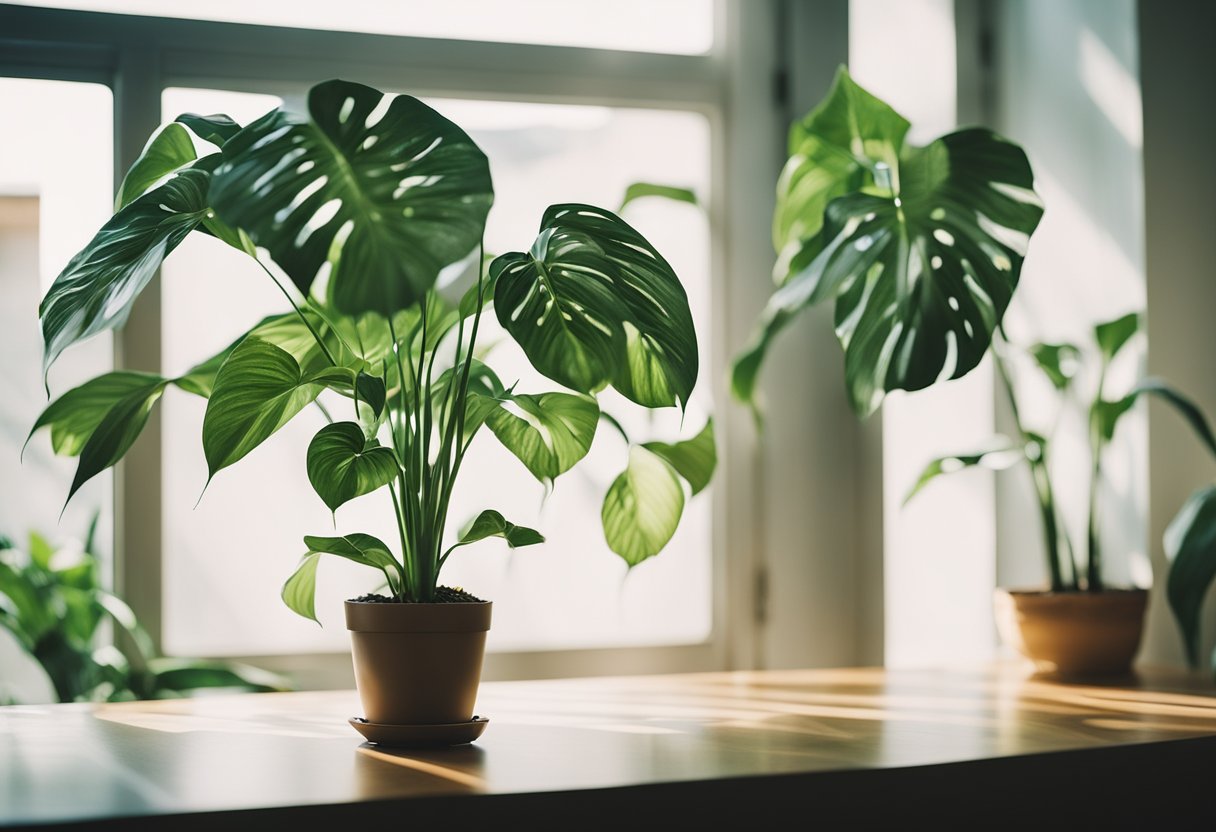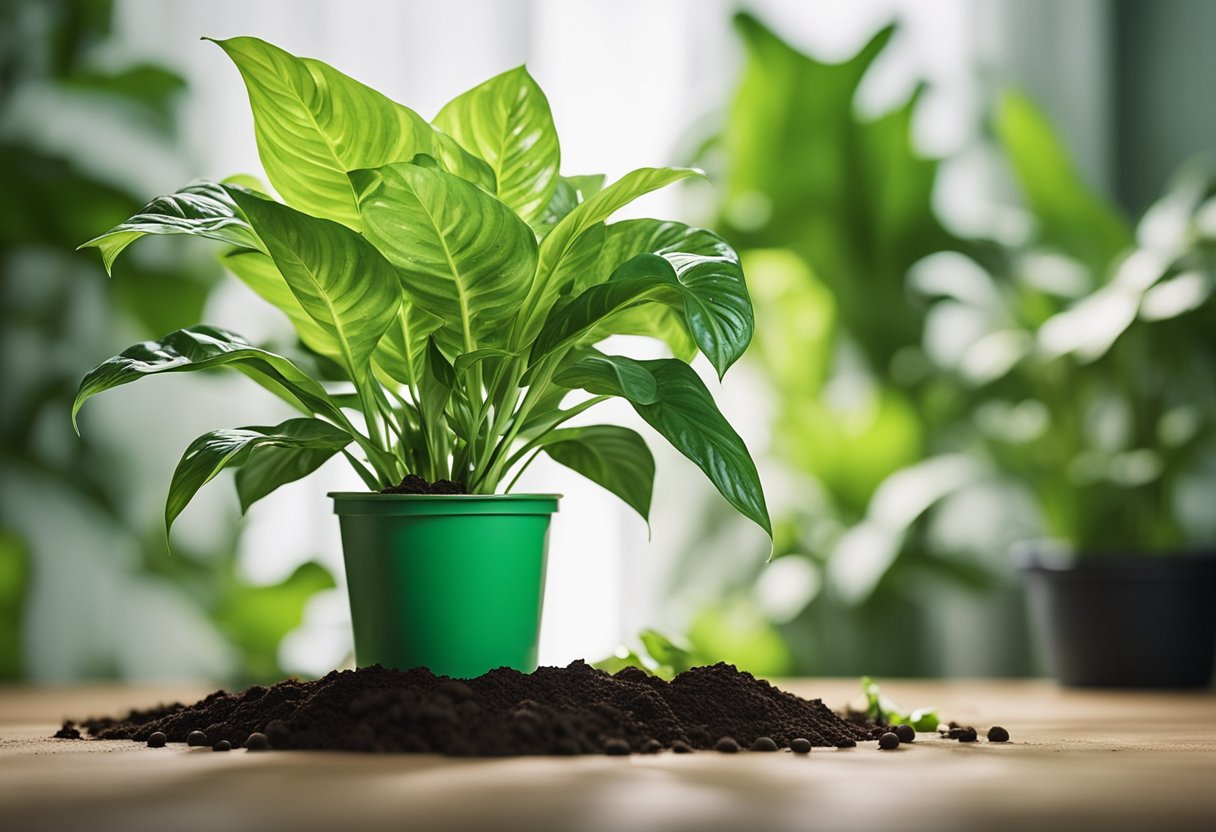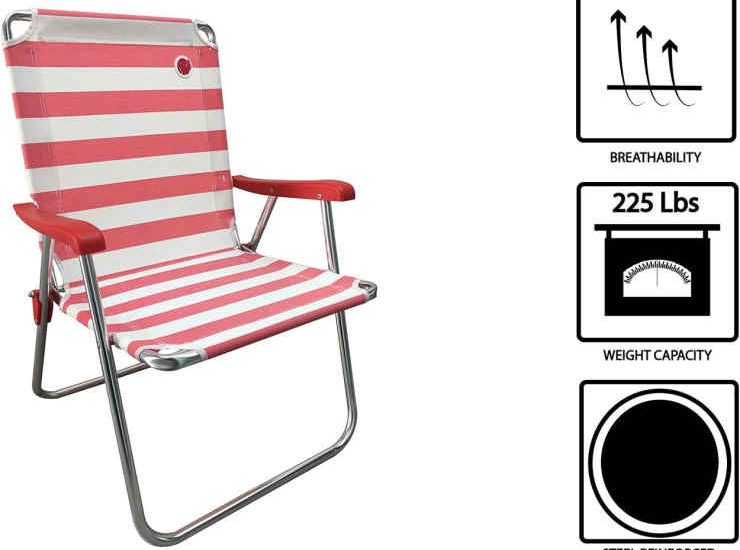Dumb Cane Plant Care: Tips and Tricks for Healthy Growth
Dumb cane plant, also known as Dieffenbachia, is a popular houseplant that is known for its lush green leaves and unique appearance. However, caring for this plant can be a bit tricky for beginners. In this article, we will cover the basics of dumb cane plant care to help you keep your plant healthy and thriving in your home.

One of the most important aspects of caring for a dumb cane plant is ensuring that it gets the right amount of light. While these plants can tolerate low light conditions, they will not thrive in complete darkness. On the other hand, too much direct sunlight can scorch the leaves and cause them to turn yellow or brown. Finding the right balance of light is crucial for the health of your plant.
In addition to light, proper watering is also essential for the care of a dumb cane plant. Overwatering can lead to root rot, while underwatering can cause the leaves to wilt and die. It is important to allow the soil to dry out slightly between waterings and to avoid letting the plant sit in standing water. With the right amount of light and water, your dumb cane plant can be a beautiful and healthy addition to your home.
Getting Started with Dumb Cane Plant Care
Understanding the Basics
Dumb Cane, also known as Dieffenbachia, is a popular houseplant known for its attractive foliage and easy care. However, it is important to understand the basics of Dumb Cane plant care to ensure its long-term health.
One of the most important things to know about Dumb Cane is that it is toxic if ingested. Therefore, it is important to keep it out of reach of children and pets. Additionally, Dumb Cane prefers bright, indirect light and should be kept away from direct sunlight.
Choosing the Right Location
When choosing a location for your Dumb Cane plant, it is important to consider the lighting conditions of your home. Ideally, it should be placed in a spot that receives bright, indirect light. Direct sunlight can scorch the leaves, while low light conditions can cause the plant to become leggy and weak.
In addition to lighting, it is important to consider the temperature and humidity levels of your home. Dumb Cane prefers temperatures between 60-75°F and moderate to high humidity levels.
Selecting the Appropriate Pot
Choosing the right pot for your Dumb Cane plant is crucial for its overall health and growth. It is recommended to select a pot that is at least 2-3 inches larger in diameter than the plant’s current pot. This allows for proper root growth and prevents the plant from becoming root-bound.
When selecting a pot, it is important to choose one with drainage holes to prevent water from accumulating at the bottom. This can cause root rot and other issues. Additionally, using a potting mix that is well-draining can help prevent overwatering and promote healthy root growth.
Overall, getting started with Dumb Cane plant care is relatively easy as long as you understand the basics, choose the right location, and select an appropriate pot. With proper care, your Dumb Cane plant can thrive and add a touch of natural beauty to your home.
Optimal Growing Conditions
Light Requirements
Dumb cane plants thrive in bright, indirect light. Direct sunlight can scorch the leaves and cause damage to the plant. If the plant is not receiving enough light, the leaves will become pale and the plant will grow slowly. Therefore, it is recommended to place the plant near a window with filtered light or to use artificial light sources.
Soil and Fertilization
Dumb cane plants prefer a well-draining potting soil with a pH range of 6.0 to 7.0. It is important to avoid overwatering, as it can lead to root rot and damage the plant. Fertilize the plant every two weeks during the growing season with a balanced fertilizer to promote healthy growth.
Watering Practices
Watering practices are crucial for the health of dumb cane plants. It is recommended to water the plant when the top inch of soil is dry to the touch. Overwatering can lead to root rot, while underwatering can cause the leaves to wilt and dry out. It is important to maintain a consistent watering schedule to ensure the plant’s health.
Temperature and Humidity
Dumb cane plants prefer temperatures between 60-75°F (15-24°C) and high humidity levels. Low humidity can cause the leaves to dry out and turn brown. To increase humidity, mist the leaves regularly or place the plant on a tray of pebbles filled with water. Avoid placing the plant near cold drafts or heating vents, as it can cause stress to the plant.
Overall, providing optimal growing conditions is essential for the health of dumb cane plants. By following these guidelines, one can ensure their plant thrives and remains healthy.
Maintaining Your Dumb Cane Plant

Pruning and Cleaning
Pruning is an essential part of dumb cane plant care. It helps to maintain the plant’s shape, encourages new growth, and prevents it from becoming too leggy. To prune your dumb cane plant, use a sharp, clean pair of scissors or pruning shears to cut back any dead or damaged foliage. You can also remove any lower leaves that are yellowing or browning.
Cleaning your dumb cane plant is also important to prevent the buildup of dust and debris on the foliage. Wipe the leaves with a damp cloth or sponge to remove any dirt or dust that has accumulated. This will help to keep the plant healthy and looking its best.
Repotting and Root Health
Repotting your dumb cane plant is necessary when it outgrows its current container. When repotting, choose a pot that is one size larger than the current one. Make sure the pot has drainage holes to prevent root rot.
Root health is crucial for the overall health of your dumb cane plant. To prevent root rot, make sure the soil is well-draining and not waterlogged. Check the roots periodically for any signs of rot or damage. If you notice any issues, repot the plant into fresh soil and trim away any damaged roots.
Preventing and Treating Pests
Dumb cane plants are susceptible to pests such as spider mites, aphids, and mealybugs. To prevent these pests, keep the plant in a well-ventilated area and avoid overwatering. If you notice any pests, treat the plant with an insecticidal soap or neem oil.
Monitoring Plant Growth
Monitor the growth of your dumb cane plant to ensure it is healthy and thriving. If the plant becomes too tall or leggy, consider pruning it back to encourage new growth. Keep an eye on the size of the plant and repot it as necessary to prevent it from becoming root-bound.
By following these simple tips for dumb cane plant care, you can keep your plant healthy and looking its best.
Propagation Techniques

Dumb cane is a popular houseplant that can be propagated through stem cuttings or division. Both techniques are easy to perform and can be done in the spring, during the plant’s growing season.
Stem Cuttings
To propagate dumb cane through stem cuttings, choose a healthy stem and cut it just below a node. Remove all the leaves from the bottom half of the cutting, leaving only a few leaves at the top. Dip the cut end of the stem into rooting hormone and plant it in a well-draining potting mix. Keep the soil moist and place the cutting in a warm, bright location, but out of direct sunlight. After a few weeks, roots should begin to form, and the cutting can be transplanted into a larger pot.
Division
Propagating dumb cane through division is a simple process that involves separating the plant into smaller sections. To do this, carefully remove the plant from its pot and gently separate the roots into smaller sections. Each section should have a healthy stem and a good root system. Plant each section in a well-draining potting mix and water thoroughly. Keep the soil moist and place the new plants in a warm, bright location, but out of direct sunlight.
Propagation is a great way to spread the joy of dumb cane and create new plants for your home or to share with others. With these simple techniques, anyone can successfully propagate dumb cane and enjoy its beauty in their own space.
Safety and Precautions

Understanding Toxicity
Dumb cane plants are known for their toxicity, which can cause severe swelling in the mouth and throat if ingested. The plant’s sap contains calcium oxalate crystals that can cause irritation and discomfort. It is important to note that the toxicity level of the plant varies depending on the individual’s sensitivity and the amount ingested.
Children and pets are particularly vulnerable to the toxic effects of dumb cane plants. Therefore, it is crucial to keep the plant out of their reach. If you suspect that your child or pet has ingested any part of the plant, seek medical attention immediately.
Managing Plant Placement
When it comes to dumb cane plant care, it is essential to consider the plant’s placement carefully. The plant should be kept in a location where it is out of reach of children and pets. Additionally, it should be kept away from any high-traffic areas where it may be accidentally bumped into.
It is also important to note that dumb cane plants can grow to be quite tall, reaching heights of up to 10 feet. Therefore, it is crucial to ensure that the plant has enough space to grow and is not placed in an area where it may become cramped.
In summary, dumb cane plant care requires careful consideration of the plant’s toxicity and placement. By taking the necessary precautions, you can enjoy the beauty of this plant without putting yourself, your children, or your pets at risk.
Common Issues and Solutions

Dealing with Yellow Leaves
Yellow leaves on a dumb cane plant can be a sign of overwatering or underwatering. If the soil is consistently wet, the roots may be rotting and unable to absorb nutrients properly, leading to yellow leaves. On the other hand, if the soil is too dry, the plant may be experiencing drought stress and shedding leaves.
To address yellow leaves, first check the soil moisture level. If the soil is wet, reduce watering frequency and ensure proper drainage. If the soil is dry, increase watering frequency and consider using a humidity tray or misting the plant to increase moisture in the air. Additionally, remove any yellow leaves to prevent the spread of disease.
Addressing Legginess and Drooping
Dumb cane plants can become leggy and droopy if they are not receiving enough bright indirect light. To address this, move the plant closer to a window or provide artificial light. Additionally, pruning can help encourage bushier growth and prevent legginess.
If the plant is drooping, it may be a sign of underwatering or root rot. Check the soil moisture level and adjust watering accordingly. If root rot is suspected, carefully remove the plant from its pot and inspect the roots. Trim any brown or mushy roots and repot the plant in fresh soil.
Combatting Diseases
Dumb cane plants are susceptible to various diseases and fungi, including leaf spot, stem rot, and powdery mildew. To prevent the spread of disease, ensure proper air circulation and avoid overcrowding plants. If a plant does become infected, remove any affected leaves or stems and treat with a fungicide as directed.
Regularly inspecting the plant for signs of disease and promptly addressing any issues can help keep the plant healthy and thriving.
Dumb Cane Plant Varieties

Popular Cultivars
Dumb Cane, also known as Dieffenbachia, is a popular houseplant due to its attractive foliage and easy care. There are many cultivars of Dumb Cane available, each with its own unique characteristics. Some of the most popular cultivars include:
Amoena: This cultivar has green leaves with white spots and is known for its compact size, making it perfect for small spaces.
Seguine: Seguine is a larger cultivar with green leaves that have white and yellow stripes. It can grow up to 5 feet tall, making it a great statement plant.
Camille: Camille is a compact cultivar with green leaves that have white and yellow spots. It is perfect for adding a pop of color to any room.
Tropic Snow: Tropic Snow is a stunning cultivar with green leaves that have white edges. It is a fast grower and can reach up to 6 feet tall.
Characteristics of Different Varieties
Dumb Cane plants vary in height, foliage, and color. Some varieties have green leaves with white spots, while others have green leaves with white and yellow stripes. The size of the plant can also vary, with some cultivars reaching up to 6 feet tall.
When selecting a Dumb Cane plant, it is important to consider the lighting and humidity requirements of the specific cultivar. Some varieties prefer bright, indirect light, while others can tolerate lower light conditions. Additionally, some cultivars require higher humidity levels than others.
In terms of care, all Dumb Cane plants require well-draining soil and regular watering. However, overwatering can lead to root rot, so it is important to allow the soil to dry out slightly between waterings.
Overall, Dumb Cane plants are a great addition to any home due to their attractive foliage and easy care. With so many cultivars to choose from, there is sure to be a variety that suits your style and preferences.
Frequently Asked Questions

What are the ideal lighting conditions for maintaining healthy Dieffenbachia plants?
Dieffenbachia plants thrive in bright, indirect light. Direct sunlight can scorch the leaves, while low light can cause the plant to become leggy and sparse. It is recommended to place the plant near a window that receives filtered sunlight or to provide artificial light if natural light is insufficient.
How frequently should I water my Dieffenbachia to ensure optimal growth?
Watering frequency depends on various factors such as temperature, humidity, and soil type. As a general rule, water the plant when the top inch of soil feels dry to the touch. Overwatering can lead to root rot, while underwatering can cause the leaves to wilt and drop. It is important to maintain consistent moisture levels and to avoid letting the plant sit in standing water.
What are the common reasons for drooping and yellowing leaves in Dieffenbachia plants?
Drooping and yellowing leaves can be caused by a variety of factors, including overwatering, underwatering, pests, disease, and environmental stress. It is important to identify the underlying cause and address it promptly to prevent further damage. In some cases, pruning may be necessary to remove damaged or diseased foliage.
Is it possible to grow Dieffenbachia outdoors, and under what circumstances?
Dieffenbachia plants are typically grown indoors as houseplants, but they can be grown outdoors in warm, humid climates. They thrive in well-draining soil and require protection from direct sunlight and cold temperatures. Outdoor plants should be brought indoors during the winter months or when temperatures drop below 60°F.
How can I propagate Dieffenbachia to create new plants?
Dieffenbachia can be propagated through stem cuttings or by division. Stem cuttings should be taken from healthy, mature plants and rooted in moist potting soil or water. Division involves separating the plant into smaller sections and replanting them in fresh soil. Both methods require careful attention to watering and environmental conditions.
Which type of fertilizer is best suited for Dieffenbachia, and how often should it be applied?
Dieffenbachia plants benefit from regular fertilization during the growing season. A balanced, water-soluble fertilizer with equal amounts of nitrogen, phosphorus, and potassium is recommended. Fertilizer should be applied every two to three weeks, following the manufacturer’s instructions for dilution and application. Overfertilization can lead to salt buildup and damage to the plant.


